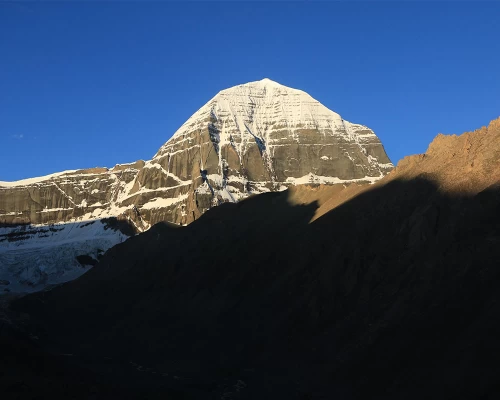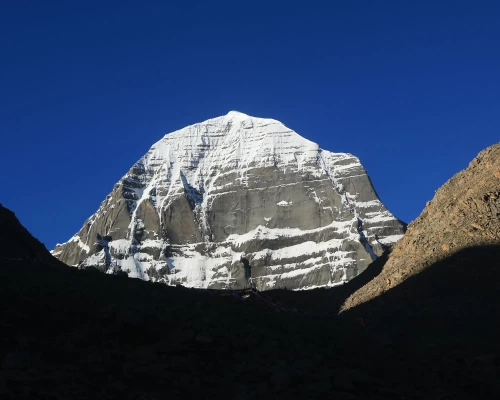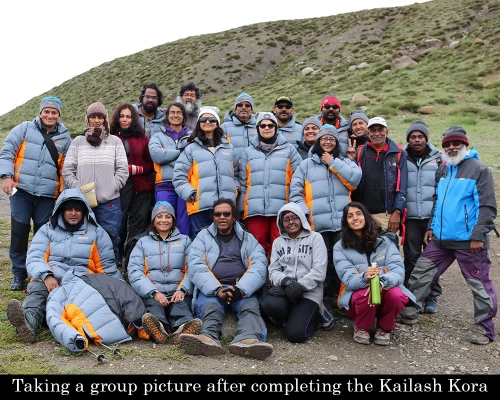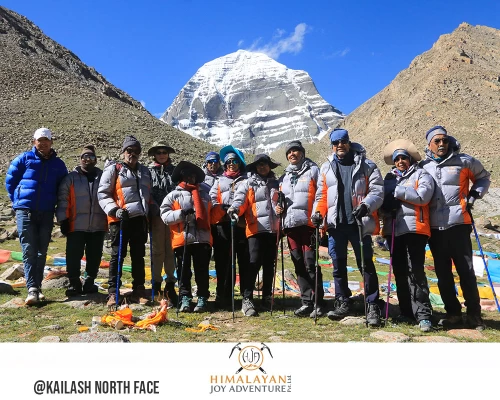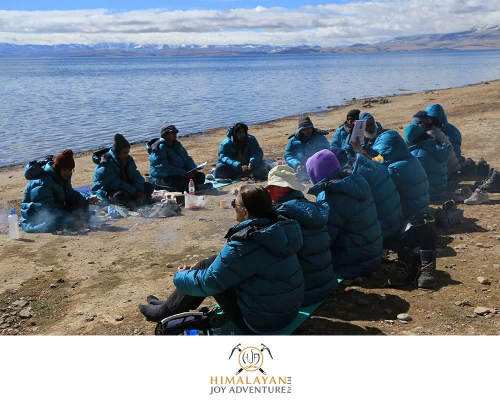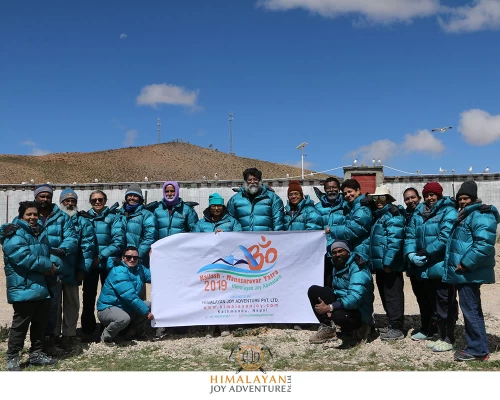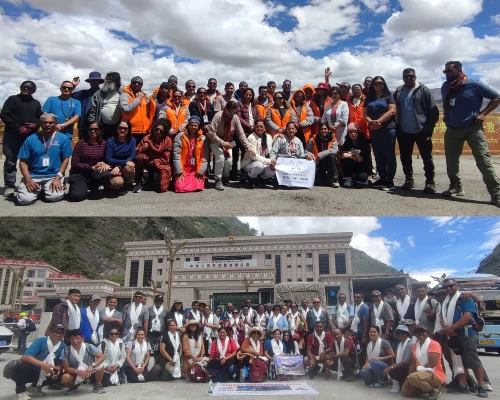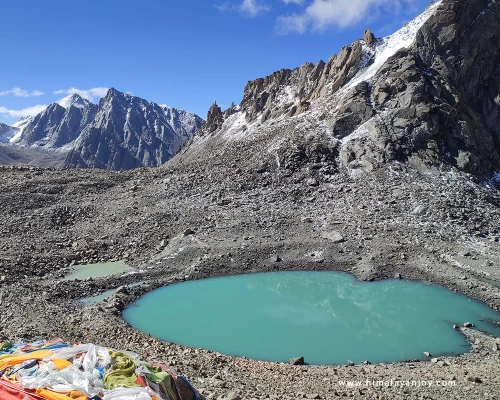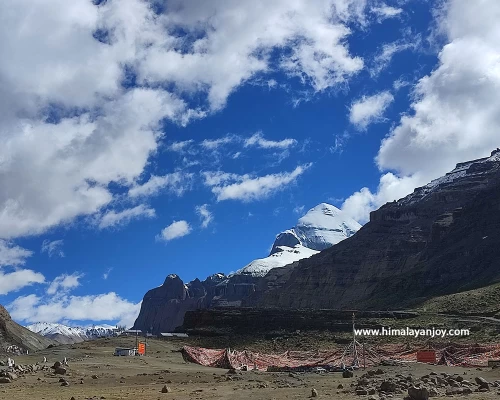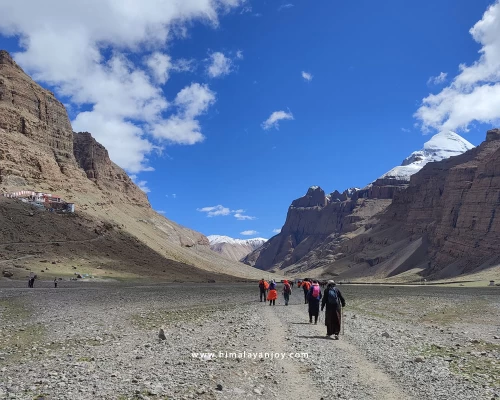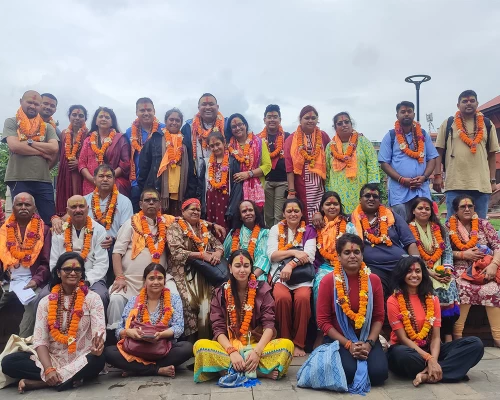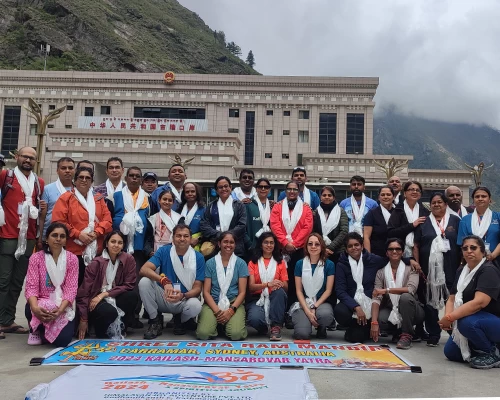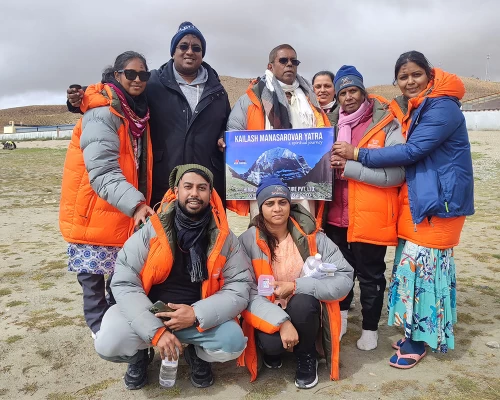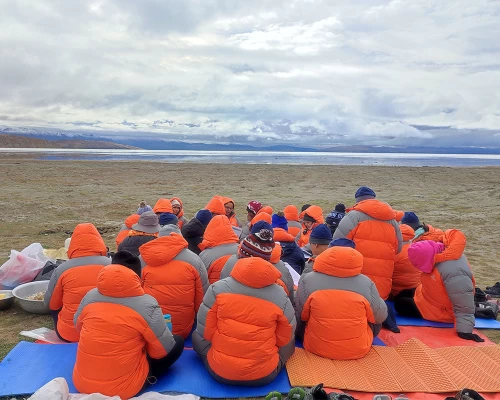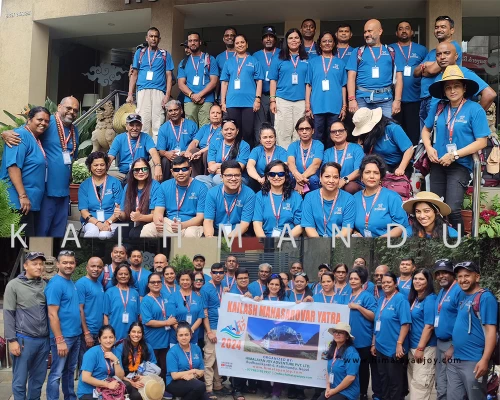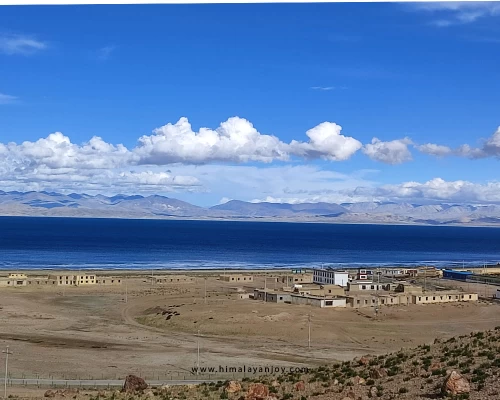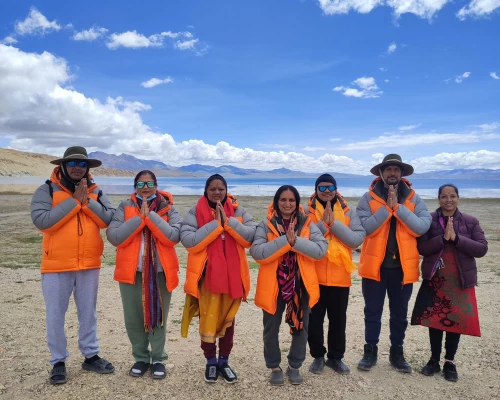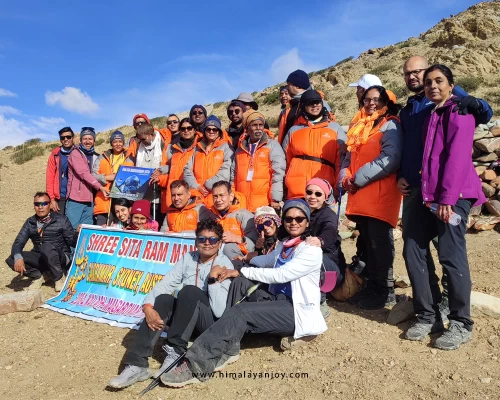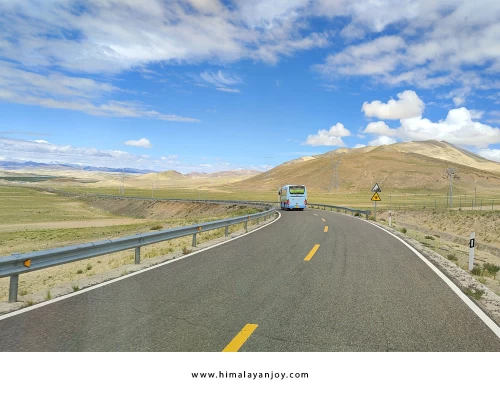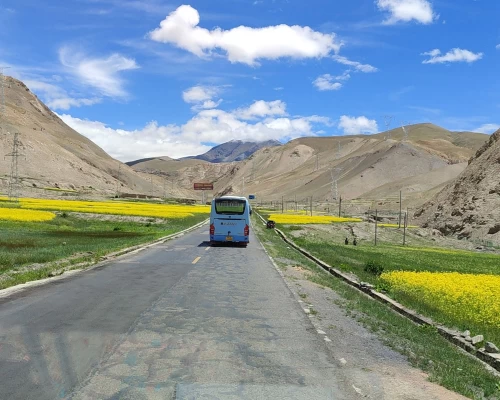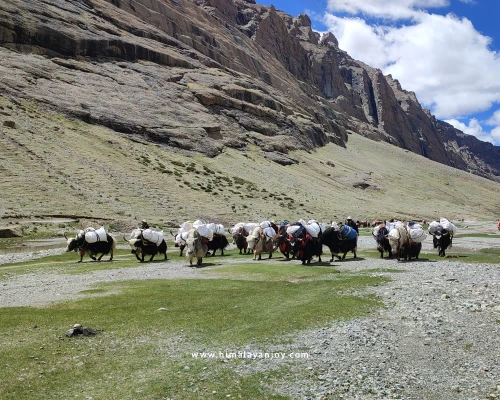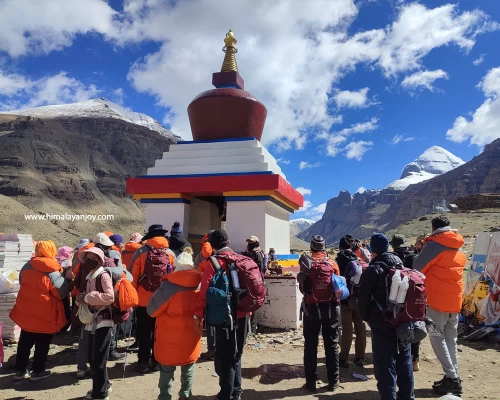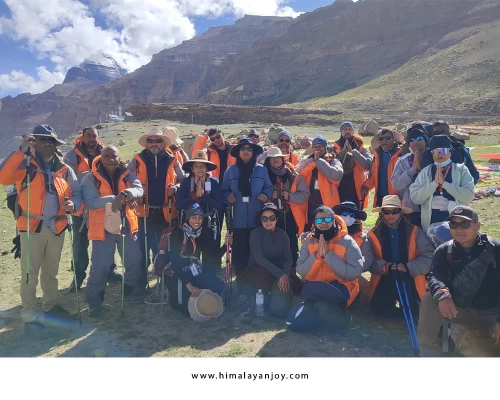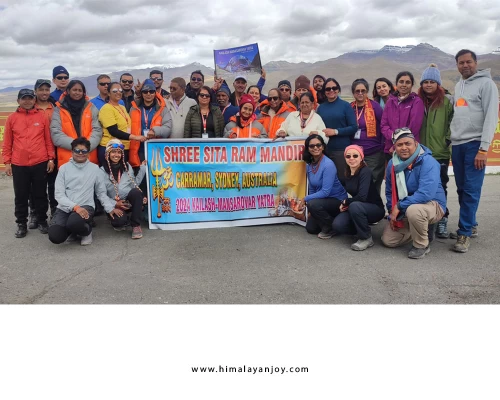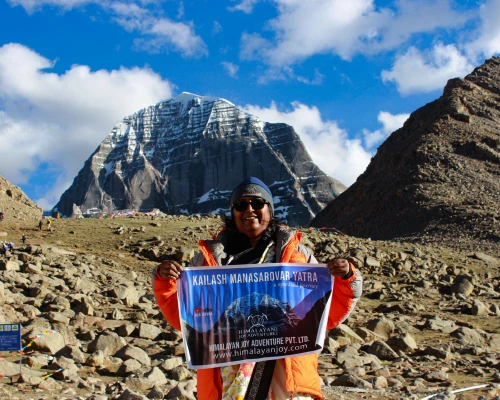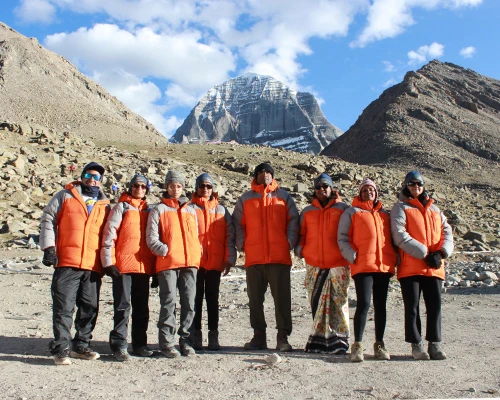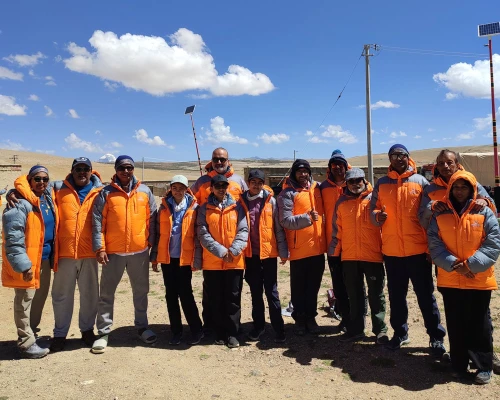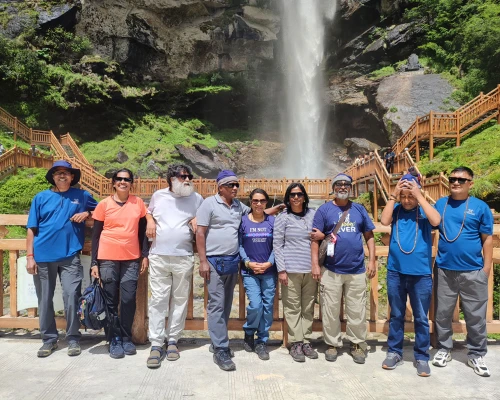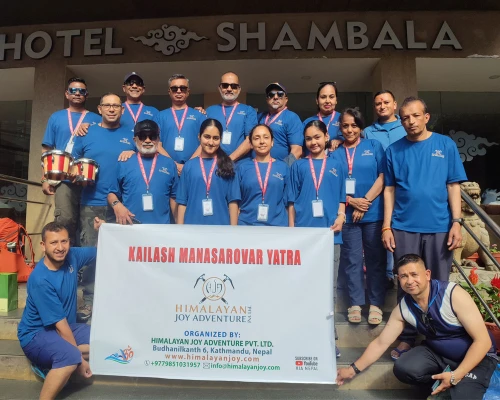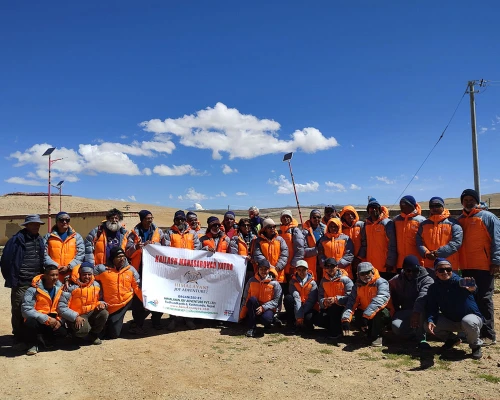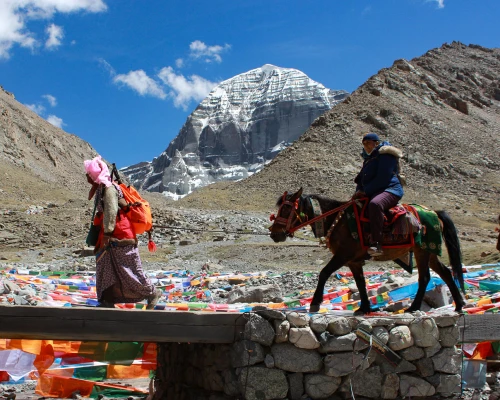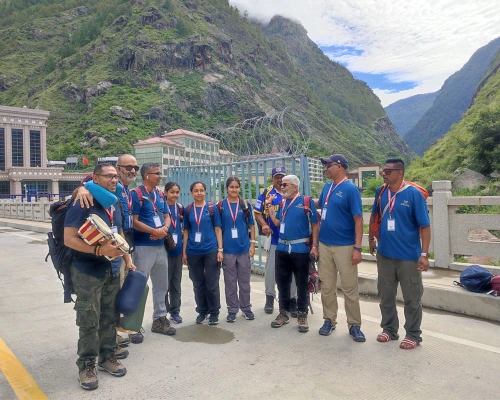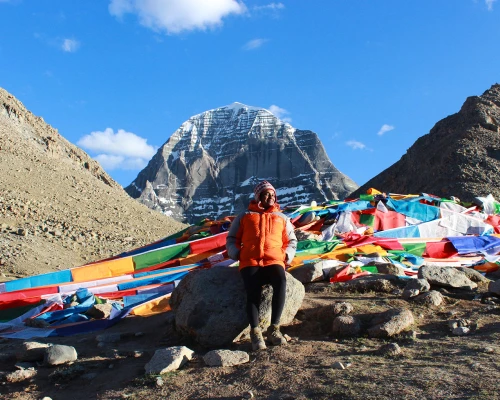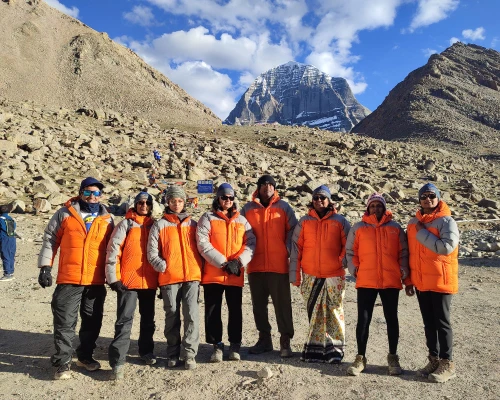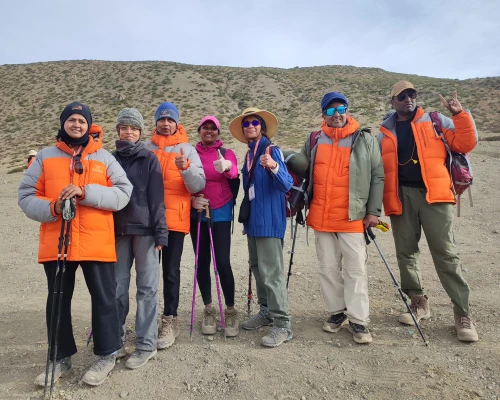Tour Highlights
- Spiritual journey to Mount Kailash (6,638 m) and Lake Mansarovar (4,590 m), sacred to Hindus, Buddhists, Jains, and Bon followers.
- Scenic overland drive from Kathmandu to Tibet, passing beautiful valleys, rivers, and the vast Tibetan plateau.
- Holy rituals and meditation by Lake Mansarovar, with an opportunity to take a dip in its purifying waters.
- Three-day Kailash Parikrama (Kora) across Dolma La Pass (5,630 m), the most challenging and spiritual part of the journey.
- Visits to sacred and cultural sites in Kathmandu Valley, including Pashupatinath Temple, Boudhanath Stupa, and Swayambhunath.
- Panoramic views of Shishapangma, Gurla Mandhata, and other Himalayan peaks.
- Acclimatization days in Nyalam and Saga for a safer, more comfortable yatra.
- Special 2026 departures during Full Moon and the auspicious Year of the Horse, for an even more meaningful experience.
Kailash Mansarovar Yatra 2026 via Nepal (Overview)
The Kailash Mansarovar Yatra 2026 via Nepal (also spelled Manasarovar Yatra) is one of the holiest pilgrimages on Earth. Over about 15 days, the route takes you from Kathmandu across the Tibetan Plateau to two sacred sites, Mount Kailash (6,638 m) and Lake Mansarovar (4,590 m). For Hindus, Buddhists, Jains, and Bon followers, this journey is a path of devotion, reflection, and inner transformation.
In recent years, more Indian and NRI pilgrims have begun joining the Kailash Mansarovar Yatra through the Nepal route, as it provides the most convenient and reliable access to Tibet.
The pilgrimage begins in Kathmandu, where you visit revered temples like Pashupatinath, Boudhanath, and Swayambhunath. Once the Tibet Group Visa is arranged, you travel by road through Syabrubesi and Kerung, witnessing the dramatic shift from green valleys to the high-altitude wilderness of Tibet.
Reaching Lake Mansarovar is a deeply emotional moment. Pilgrims gather here to pray, meditate, and bathe in its holy waters, believed to wash away sins and bring spiritual renewal. From Mansarovar, the route continues to Darchen, the starting point of the Kailash Parikrama.
The three days Parikrama (Kora) around Mount Kailash is the heart of the Yatra. Starting at Yama Dwar, it follows valleys and rivers before climbing the Dolma La Pass (5,630 m), the most testing yet uplifting stage of the journey. Along the trail lie sacred places like Gauri Kund and Zutulpuk Monastery, each holding profound significance.
After completing the circuit, the journey returns via Saga and Nyalam, then back into Nepal. The Yatra ends in Kathmandu, giving time to rest and reflect before returning home with memories of a sacred landscape that few are blessed to see.
If you have long wished to witness Mount Kailash and Lake Mansarovar, let 2026 be your year to take this life-changing step.
Why Most Indian and NRI Pilgrims Begin from Nepal
In recent years, the Nepal route has become the most preferred and practical option for Indian and NRI pilgrims traveling to Mount Kailash and Lake Mansarovar.
With the gradual reopening of Tibet travel permits, the journey via Kathmandu offers easier coordination, faster visa processing, and well-managed group departures led by licensed Nepal based operators.
Daily flights connect Kathmandu with major Indian cities such as Delhi, Kolkata, and Lucknow, making it a convenient starting point. From here, pilgrims can choose between the overland route through Kerung and Saga or the helicopter route via Nepalgunj, Simikot, and Hilsa.
At Himalayan Joy Adventure, we handle every essential detail from group visa arrangements and border transfers to accommodation, meals, and local support.
What to Expect from the 15 Days Kailash Mansarovar Yatra 2026?
Many itineraries rush through the Kailash Mansarovar Yatra to save time, but at Himalayan Joy Adventure, we focus on making your journey meaningful and comfortable.
Our 15 days itinerary moves at a steady pace, with time to rest, acclimatize, and absorb every spiritual moment. Here’s what you can look forward to:
1) Spiritual Start in Kathmandu
The Yatra begins with visits to Pashupatinath Temple, Boudhanath Stupa, and Swayambhunath, setting a sacred tone for the days ahead. These moments of prayer and blessing help you prepare mentally for the high-altitude journey to Tibet.
2) Overland Drive to Tibet
Traveling by road lets you witness the transition from the green hills of Nepal to the vast, dry landscapes of Tibet. The drive crosses valleys, rivers, and high mountain passes, with stops carefully planned for comfort and acclimatization.
For those who prefer to fly directly into Tibet and begin their journey from Lhasa, check our "Kailash Mansarovar Yatra via Lhasa" package.
3) Sacred Lake Mansarovar
Arriving at Lake Mansarovar (4,590 m) is a deeply emotional experience. You will have time for puja, meditation, and reflection by the lake. Many pilgrims take a holy dip or collect water from the sacred lake, believed to purify the soul and cleanse past karma.
4) The Kailash Parikrama (Kora)
The three day Kailash Parikrama is the highlight of the Yatra, a walk of devotion and endurance around Mount Kailash (6,638 m). It includes the crossing of Dolma La Pass (5,630 m), the toughest yet most rewarding part of the journey.
If you’re curious about how demanding this section is, read our detailed blog: "How Difficult is Kailash Parikrama (Kora)? Everything You Need to Know".
5) Simple Stays and Meals
Accommodation during the Yatra is simple but sufficient, clean guesthouses and lodges offering warm meals and the kind hospitality of local people. Every evening, travelers gather to share stories, reflect on the day, and enjoy home-cooked Tibetan and Nepali meals.
6) Faith and Inner Strength
The Kailash Mansarovar Yatra is more than reaching a destination. It is about the people you meet, the prayers you share, and the quiet moments when you feel connected to something greater than yourself.
Each step brings humility, patience, and peace. The true gifts of this sacred journey.
Best Time to Visit Kailash Mansarovar - When Should You Go?
The best time to plan your Kailash Mansarovar Yatra is between May and September. During these months, the weather in Tibet is relatively stable, making the journey safer and more comfortable. Daytime temperatures usually range between 10°C and 20°C, which is mild enough for walking and performing rituals by the lake. Nights can still be cold, especially at higher altitudes, but the skies are often clear, offering breathtaking views of Mount Kailash and Lake Mansarovar.
This season also coincides with important festivals, the most significant being Saga Dawa, which celebrates the birth, enlightenment, and passing of Lord Buddha. Many pilgrims choose to time their journey around this festival to add a deeper cultural and spiritual dimension to their yatra.
Travel outside these months is not recommended. From October to April, heavy snow, freezing temperatures, and road closures make the region difficult and sometimes impossible to access.
If you are looking for the most rewarding experience, plan your Kailash Mansarovar Yatra 2026 between late spring and early autumn, when the landscapes are colorful, the weather is cooperative, and the spiritual energy of the region feels at its peak.
Many pilgrims reserve their seats months in advance for these ideal months, especially around Saga Dawa festival. So advance reservation is highly recommended.
Preparing for the Yatra (Fitness, Health & Acclimatization Needs)
Many first-time pilgrims worry about Dolma La Pass (5,630 m), but with the right pacing and preparation, most find it easier than they expected. At 5,630 meters, this high mountain pass is the toughest part of the journey, where thin air makes every step more demanding. Preparing in advance with regular walks, light hikes, or yoga helps build the stamina needed to face it calmly.
Since much of the yatra takes place above 4,000 meters, altitude is the main challenge. Our itinerary includes rest days in places like Nyalam and Saga to help your body adjust gradually. Staying hydrated, eating light meals, and walking at a steady pace also make a big difference.
You don’t need to be an athlete to join this journey, but you should have a healthy heart, lungs, and general stamina. Anyone with medical conditions such as high blood pressure, heart disease, or chronic asthma should seek medical advice before booking.
With the right preparation and mindset, most pilgrims find the Kailash Parikrama more achievable than expected. We’ve explained its challenges and elevation changes in our detailed guide on how demanding the Kora can be.
Different Ways to Experience the Kailash Yatra
Not every Kailash Mansarovar Yatra is the same. Pilgrims choose different times, routes, and occasions depending on their faith, travel needs, or spiritual goals. Here are some special ways to experience this yatra:
Full Moon Kailash Yatra
Witnessing the full moon at Lake Mansarovar is one of the most powerful experience of the yatra. The moonlight shining on the clear waters creates a divine atmosphere that pilgrims describe as surreal and deeply peaceful. Many believe that bathing and meditating here during the full moon helps cleanse past karma and awakens deeper consciousness.
If you wish to join this special departure, please contact us via WhatsApp to reserve your place early.
Route Update 2026 (Kodari Route Reopened)
Good news for 2026: the traditional Kodari - Zhangmu - Nyalam route has reopened, the main pathway before COVID-19.
The Syabrubesi–Kerung routeremains closed due to flood damage, so the Nyalam route is currently the safest and most scenic option.
Updated plan:
Drive to Nyalam and stay 2 nights for acclimatization.
Continue to Saga on Day 3.
After completing the parikrama, return via Saga - Nyalam - Kodari to Kathmandu.
Kailash Yatra for Indian Passport Holders
Finally, the Yatra is now open to Indian nationals through both the Simikot–Hilsa and Kodari–Tatopani routes.
Travel Requirements:
Passport must be valid for at least 6 months beyond your travel date
Minimum of 2 blank visa pages for entry/exit stamps
Now, Indian pilgrims can join fixed departures arranged under these routes, and have thier lifelong spiritual dream come to reality.
Why 2026 Is a Sacred Year of the Horse for the Yatra
According to the Tibetan calendar, 2026 is the Year of the Horse, a time believed to carry special spiritual power. It is said that completing the Kailash Parikrama during this year multiplies the merit of the pilgrimage many times over. The Horse Year comes only once every 12 years, and for many pilgrims, it is the most auspicious time to undertake the yatra. If you are planning ahead, 2026 offers a rare and powerful opportunity to walk the sacred path around Mount Kailash.
Kailash Mansarovar Yatra Cost 2026 - What You Should Know
The Kailash Mansarovar Yatra 2026 package cost ranges from USD 2,650 to 2,850 per person, depending on group size, permits, and travel arrangements. The main reason it costs more than other Himalayan trips is the requirement for a Tibet Travel Permits and special group visa, which are included in the package.
At Himalayan Joy Adventure, we offer different prices for the 15 days Kailash Mansarovar Yatra based on the group size. Please see the details below:
| Number of Pax | Starting Price (Per Person) |
|---|---|
| 5-10 pax | USD 2,850 |
| 11-25 pax | USD 2,790 |
| 26-40 pax | USD 2,690 |
| 41-50 pax | USD 2,650 |
We keep the cost transparent with no hidden charges. Our experienced team handles all logistics so you can stay focused on your spiritual journey.
Special Package Cost for Indian Citizens (2026)
For Indian citizens, we offer a special package cost of INR 2,40,000 per person for the 15 Days Kailash Mansarovar Yatra 2026.
This rate is available for group departures of 15–20 pilgrims and includes all major services such as permits, visa processing, accommodations, meals, and ground transportation from Kathmandu.
Our team also provides full support for Indian travelers, from Tibet visa assistance to border coordination, ensuring a smooth and well-organized journey.
If you are an Indian traveler planning to join, please send us a message on WhatsApp, our team will assist you personally.



